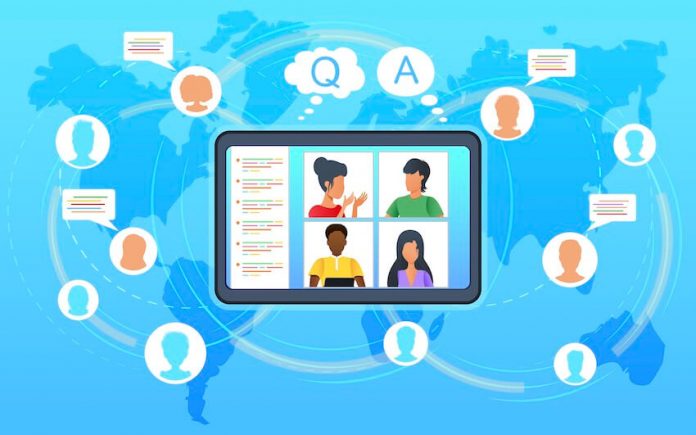
Have you ever engaged a group of people during a virtual training session and noticed some students not paying attention to the lesson or talking among themselves? Corporate trainers often struggle with this common problem. The distraction from other students can be detrimental to the learning process.
To solve these problems, it’s important to lean on the resources you have and to know there are things you can do to help those who are less engaged become more so.
5 Tools to Use
People learn in different ways. Some people learn better with visual aids, some with printed material, and others when the training is hands-on. While it can be tough to incorporate every method into your training, it is important to meet the varying learning styles of each individual.
Thankfully, there are some great tools available to help trainers engage more of their audience and offer a much more interactive experience.
If you’re trying to help your learners, trainees, or customers engage better, make sure your training software enables you with these tools:
1. In-App Videoconferencing
Much like an online class live lecture, in-app videoconferencing tools are great for online training. They allow presenters to engage with their audience in real time and answer any questions they might have. In addition, they provide a visual element to traditional online training that isn’t always present when you rely solely on written content or audio tracks.
In-app videoconferencing is as close to a live presentation as you can get—with a considerable upside. Besides being able to reach more people in the convenience of their own homes, the reduced stress of putting oneself out there can lead to more participation from the entire group.
2. Multi-Instructor Mode
Having more than one instructor allows for more personal attention to each student, which increases engagement. Look for a solution that allows you to set up multiple instructors (and assign them specific roles) so they can monitor students’ progress.
Having one instructor is great. You can book them for multiple sessions, which saves time and effort. However, there are times when you may want to engage more than one instructor for your online training. Here are some of the best reasons to consider multi-instructor functionality for your online training:
- You can use different instructors for different parts of an online training course. For example, you can have a presentation instructor and a discussion leader in the same meeting.
- Participants often find it easier to learn from more than one person. They may not prefer listening to only one person all the time during a training session. Having more than one instructor helps break the monotony and keeps learners engaged in the training session.
- Using more than one instructor gives you flexibility in training delivery, especially if you have a large number of participants joining the training session, such as in company-wide training or when onboarding new employees
- The multi-instructor option is beneficial if you want a few people to lead discussions on various topics during an online training session.
3. Analytics Panels
Without measuring, how can you tell if your learners are getting the most out of your training?
Analytics are vital for an online training platform. They allow the presenter to track their audience’s engagement data from before, during, and after a class. This helps them understand the effectiveness of their training programs and make improvements to them over time.
For example, if one group of students seems to be struggling with a particular topic or concept, it might be helpful for them to review that material again before moving on.
An analytics dashboard also makes it easier for you to monitor learner engagement throughout the course because all of the data about learners’ activity is aggregated into one place. This allows you not only to see what they’re doing but also when they’re doing it, and how well they’re doing.
4. LMS Integration
Training programs that integrate with learning management systems (LMSs) can incorporate learning materials directly onto their platforms. This enables trainers to easily incorporate documents, videos, and other materials into their online training as needed.
It also allows the trainer to have a bird’s eye view of all the trainees’ progress through the training program. In addition, it is possible to track their performance on quizzes and tests in order to gauge whether they have gained knowledge of the topics and concepts covered by the training courses.
The easier it is to operate and sync with an LMS, the more useful this function will be.
5. Content Panels
You’ve invested in online training, but your employees are having trouble focusing. They’re getting lost and disengaged. When everyone is at their desk and can see the same content, they can easily get off track.
So how do you make sure your employees are getting the most out of their training? How do you measure what they’re learning?
A content panel is a tool that allows for a richer, more engaging experience—one that allows them to focus on the most important elements of the training. It allows you to drop content into a panel beside your environment screen (for example, a slideshow), so students can see both at once.
Think about it: If you have one screen with an environment in it and another with information about that environment or tips on how to navigate it, your employees will have to toggle back and forth between the two screens. That takes time and can be confusing for some people. It also can lead to more mistakes because they’re not paying attention as much as they should be.
Content panels allow you to keep their focus and increase the effectiveness of the training at the same time.
The Big Picture
For those who have taught online training, you know how important and challenging it is to keep your audience engaged. The tools highlighted above can help you achieve that goal and bring more value to your audience.

